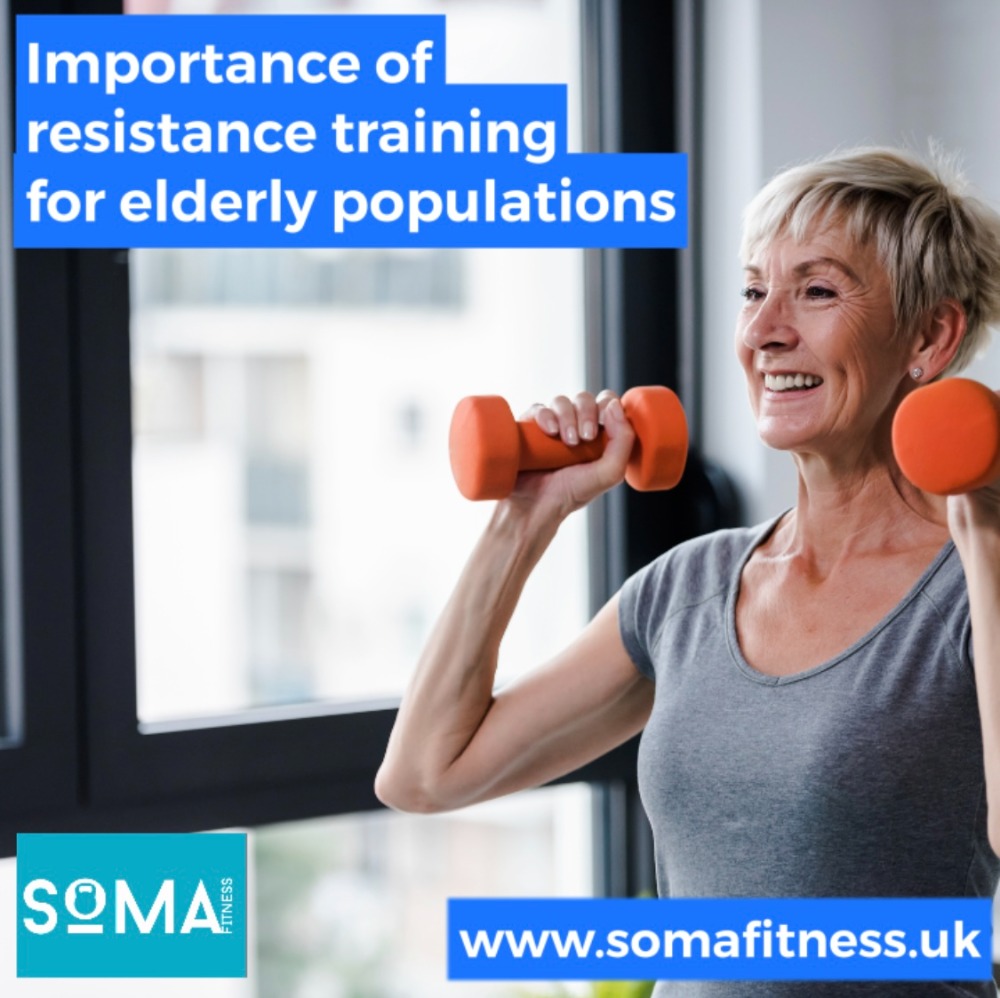Importance of Resistance Training for Elderly Populations
What is Resistance Training?
Resistance Training can be defined as a form of exercise, whereby external weights provide progressive overload to skeletal muscles in order to make them stronger and often result in hypertrophy (growth in overall size of muscle cells) (Alix-Fages et. al, 2022; Phillips and Winett, 2010), which can lead to several benefits.
Benefits:
Less chance of falls and subsequent physical inactivity:
Araujo et. al (2022) found that middle aged or older people who could not stand on one leg for more than 10 seconds were more likely to die in the next seven years, compared to people who could. Why could this be the case?
People with less balance can be more prone falls. When in older age, this is more likely to lead to serious injury to lower bone density. If this results in a hip fracture, then there is no guarantee they will reach pre-injury level of recovery, leaving a lack of mobility and pain. With many people, this can result in them stopping activities which they used to enjoy, such as regular walks, and meeting up with friends to do things. This decrease in physical activity and increase in isolation can further accelerate the negative effects of the fall such as increased risk of depression and heart disease from being physically inactive
Reduce risk of chronic diseases and keeping one’s independence:
Furthermore, regular resistance training (2-3 sessions per week) has been shown to reduce the risk of chronic diseases such as osteoporosis, heart disease, arthritis and type 2 diabetes. (Fragala et. al, 2019), as well as being important in managing sarcopenia (the gradual loss in muscle mass due to age). Avoiding these chronic diseases can help people keep their independence in their old age, thus increasing their quality of life. For example, if someone can avoid osteoporosis and arthritis, then they can move with much more ease. This allows them the ability to complete activities such as playing with grandchildren and climbing stairs.
The snowball effect of being able to do these things can also have a positive effect on one’s mental health as they will be able to live with more confidence, less anxiety and more social interactions instead of potential isolation due to lack of mobility.
Seeing these benefits first hand:
As a personal trainer, one of the main protocols I take when working with older clients is to incorporate exercises which improve their balance and stability into their training programme, at a level suited to them. This can start off as simple as dowel assisted front foot elevated split squat, progressing all the way to unassisted single leg Romanian deadlifts. When performed consistently and accompanied by adequate nutrition, results are seen quickly so never think that it’s too late to start resistance training.
Reference List:
- Alix-Fages, C., Del Vecchio, A., Baz-Valle, E., Santos-Concejero, J., & Balsalobre-Fernández, C. (2022). The role of the neural stimulus in regulating skeletal muscle hypertrophy. European Journal of Applied Physiology, 1-18.
- AraujoCG, de Souza e Silva CG, Laukkanen JA, et al, Successful 10-second one-legged stance performance predicts survival in middle-aged and older individuals British Journal of Sports Medicine Published Online First: 21 June 2022. doi:1136/bjsports-2021-105360
- Fragala, Maren S.1; Cadore, Eduardo L.2; Dorgo, Sandor3; Izquierdo, Mikel4; Kraemer, William J.5; Peterson, Mark D.6; Ryan, Eric D.7Resistance Training for Older Adults: Position Statement From the National Strength and Conditioning Association, Journal of Strength and Conditioning Research: August 2019 – Volume 33 – Issue 8 – p 2019-2052 doi: 10.1519/JSC.0000000000003230
- Phillips, S. M., & Winett, R. A. (2010). Uncomplicated resistance training and health-related outcomes: evidence for a public health mandate. Current sports medicine reports, 9(4), 208.
- Zhang, J., Ang, M. L., & Kwek, E. B. (2015). Who Will Walk Again? Effects of Rehabilitation on the Ambulatory Status in Elderly Patients Undergoing Hemiarthroplasty for Femoral Neck Fracture. Geriatric orthopaedic surgery & rehabilitation, 6(3), 168–172. https://doi.org/10.1177/2151458515583111


Leave a Comment
(0 Comments)